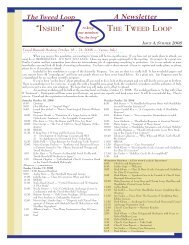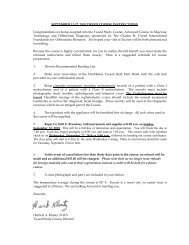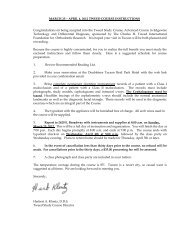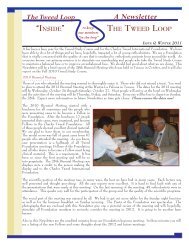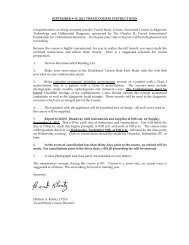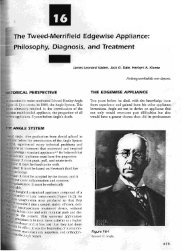the tweed profile - The Charles H. Tweed International Foundation
the tweed profile - The Charles H. Tweed International Foundation
the tweed profile - The Charles H. Tweed International Foundation
You also want an ePaper? Increase the reach of your titles
YUMPU automatically turns print PDFs into web optimized ePapers that Google loves.
CORRECTION OF ADULT SKELETAL CLASS II BIALVEOLAR PROTRUSION<br />
SEO-YE IM<br />
REPUBLIC OF KOREA<br />
ABSTRACT<br />
<strong>Tweed</strong>-Merrifield force systems provide one of <strong>the</strong> most<br />
effective ways to correct dentoalveolar protrusions and<br />
Class II malocclusions. Class II correction methodology<br />
must allow <strong>the</strong> counterclockwise rotation of <strong>the</strong> mandible<br />
via a force system that maximizes skeletal change during<br />
<strong>the</strong> adolescent period. Even for an adult patient who has a<br />
severe bialveolar protrusion Class II malocclusion, a greater<br />
than expected es<strong>the</strong>tic change can be achieved with a proper<br />
directional force system.<br />
canines and <strong>the</strong> molars have an Angle’s Class I occlusion.<br />
To off-set <strong>the</strong> protrusion, plastic surgery was performed<br />
on her nose. Even after <strong>the</strong> plastic surgery, <strong>the</strong> evidence of<br />
facial imbalance, hyperactivity of mentalis muscle, mouth<br />
breathing, and gummy smile remained. At <strong>the</strong> time of her<br />
visit, her chief complaint was “I’m still not beautiful.” Due<br />
to such a lack of self-confidence, she was an extremely<br />
motivated and co-operative patient.<br />
DIRECTIONAL FORCE SYSTEM:<br />
This system can be defined as controlled forces that place<br />
<strong>the</strong> teeth in <strong>the</strong> most harmonious relationships with <strong>the</strong>ir<br />
environment. <strong>The</strong> resultant vector of all forces should be<br />
counterclockwise so that <strong>the</strong> opportunity for a favorable<br />
skeletal change is enhanced, particularly for dentoalveolar<br />
protrusion and Class II malocclusion correction. An upward<br />
and forward force system requires <strong>the</strong> mandibular incisors<br />
be upright over basal bone so that <strong>the</strong> maxillary incisors<br />
can be moved distally and superiorly. For <strong>the</strong> upward and<br />
forward force system to be a reality, vertical control is<br />
critical. To control <strong>the</strong> vertical dimension, <strong>the</strong> clinician must<br />
control <strong>the</strong> mandibular plane, <strong>the</strong> occlusal plane, and <strong>the</strong><br />
palatal plane. Source: Seminars in Orthodontics, Vol. 2, No. 4<br />
(December), 1996: pp 237-240, 254-267<br />
CASE REPORT I<br />
CLINICAL FINDINGS AND DIAGNOSIS<br />
<strong>The</strong> patient is a 45 year, 9 month old female. She presents<br />
with a Class II bialveolar protrusion malocclusion. <strong>The</strong><br />
42



